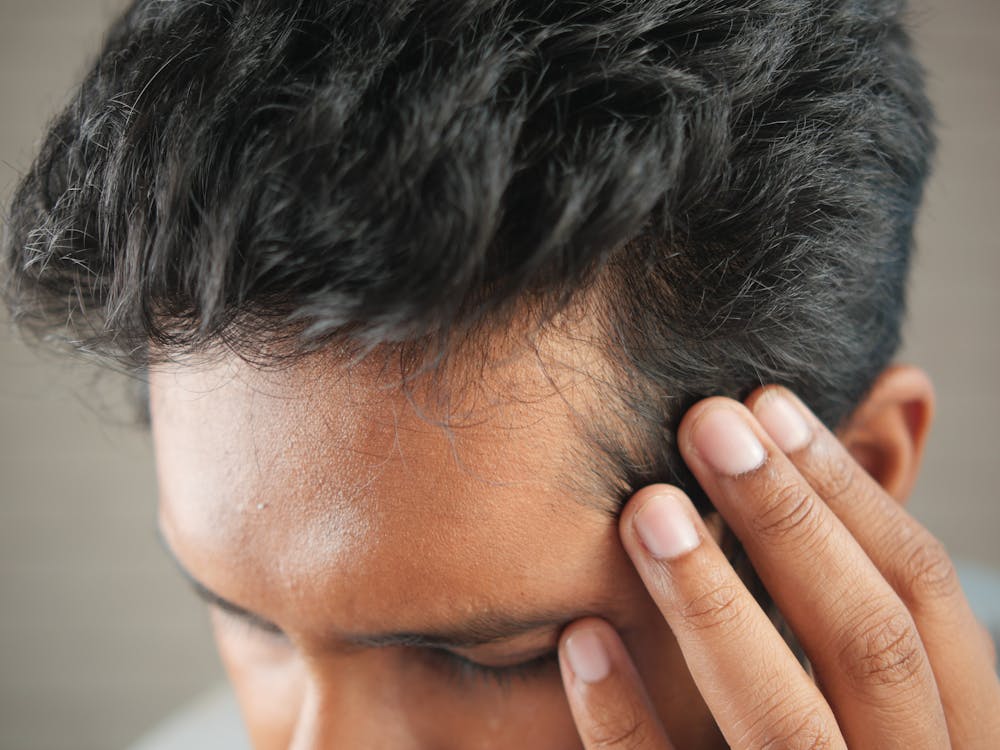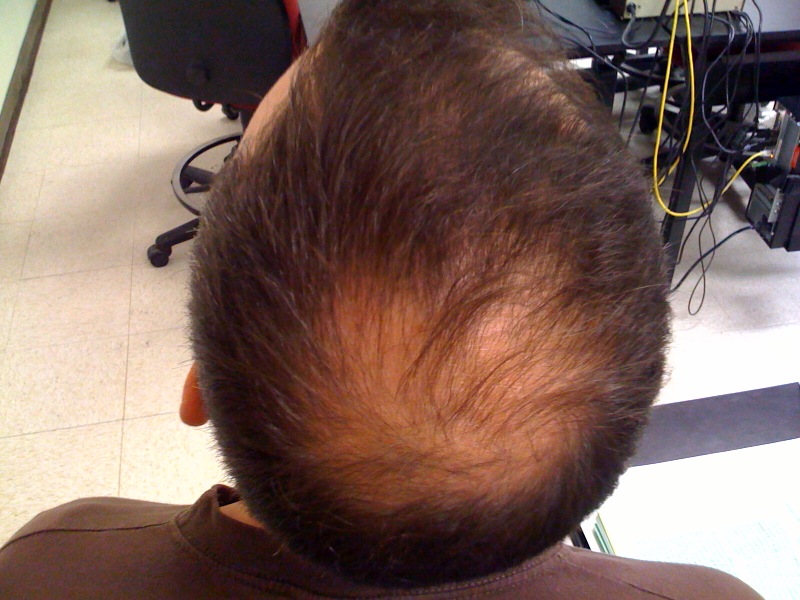Losing your hair can feel unsettling. For some men, it happens gradually over the years — a slightly higher hairline here, a little more scalp visible there. For others, it seems to accelerate overnight, catching you off guard and leaving you wondering whether it’s just temporary shedding or the start of something more permanent. Whatever the pace, hair loss can affect more than just your appearance. It can chip away at your confidence, impact how you feel in social situations, and even influence how you present yourself at work.
The good news? You don’t have to watch helplessly as your hair thins. Booking an appointment with a male hair loss specialist in Dublin can give you clarity, options, and a personalised treatment plan that addresses the root cause of your hair loss. The key is knowing when to take that step and acting before the problem progresses too far.
In this blog, we’ll explore five clear signs that it’s time to see a specialist, why early action matters, and what you can expect from professional treatment.

How Do I Know If My Hair Loss Is More Than Just Ageing?
Not all hair loss signals a permanent problem. It’s normal to shed between 50 and 100 hairs a day, and some changes in hair density are a natural part of getting older. However, there’s a difference between gradual, age-related thinning and patterns that indicate a more significant issue, such as male pattern baldness (androgenetic alopecia) or hair loss triggered by an underlying condition.
If you’re noticing sudden changes such as a noticeably receding hairline, diffuse thinning across the top of your head, or small bald patches, it’s worth paying attention. While genetics plays a strong role in many cases, environmental factors, stress, illness, or hormonal imbalances can also contribute. A specialist can help distinguish between normal ageing and treatable hair loss, giving you a clear understanding of what’s happening and how to manage it.

Early Warning Signs You Need to See a Male Hair Loss Specialist in Dublin
If you’re unsure when to act, these five signs are strong prompts to book a visit:
1. Excessive shedding that lasts more than a few weeks.
Finding more hair on your pillow, in the shower, or on your brush can follow stress, illness, or medication changes. But if it persists, it may signal something that needs intervention. A specialist can confirm whether it’s telogen effluvium, early androgenetic alopecia, or something else and advise on targeted steps rather than guesswork.
2. A receding hairline at the temples.
That classic “M” shape often starts subtly. You might first notice it when styling your fringe or comparing photos. Early miniaturisation at the front responds better to treatment than established recession. Getting advice now can help slow progression and preserve your current look.
3. Thinning at the crown.
Many men only notice this after someone points it out or they catch it in a video taken from behind. Crown thinning is a hallmark of male pattern baldness. It may advance in stages. So, an early plan, even a simple and consistent routine, can make a meaningful difference over time.
4. Sudden patchy bald spots.
Round or oval bare patches could indicate alopecia areata, an autoimmune condition that often benefits from early management. Prompt evaluation matters because the approach differs from typical male pattern hair loss.
5. Hair quality changes: finer strands, easy breakage, reduced volume.
If your hair feels less substantial than before, miniaturisation may be underway. You may also notice your styling products don’t “hold” the way they used to. Treatment is more effective while follicles are still active.
Each of these signs is more than cosmetic. They are clues about what the follicles are doing. A quick, professional assessment can spare you months of trial and error with products that aren’t right for your specific type of loss.

Can Stress or Illness Be Causing My Hair Loss?
Yes, and this is one reason a proper diagnosis matters. Telogen effluvium usually appears two to three months after a significant event such as a high‑fever illness, surgery, a demanding training phase, major life stress, or rapid weight loss. In many cases, it’s temporary and shedding eases once the trigger passes and your body resets.
Medical factors also contribute. Low iron, low vitamin D, thyroid imbalance, certain medications, and autoimmune conditions can disrupt normal cycling. These can look similar on the surface to male pattern baldness, but the management is different. A specialist can take a thorough history, order blood tests if indicated, and build a plan that targets the root cause rather than masking the symptoms.
What Treatments Can a Male Hair Loss Specialist in Dublin Offer?
Professionals can combine therapies for a better, longer-lasting response. Options may include topical stimulants that support blood flow and prolong the growth phase. Oral hair growth medication can also help address DHT-related miniaturisation, particularly if there is a strong family history of male pattern baldness. Low-level laser therapy devices offer a non-invasive option that some men use at home under clinical guidance. In-clinic procedures, such as PRP (platelet-rich plasma), aim to encourage follicle activity and improve hair calibre in suitable candidates.
Alongside these, a specialist may recommend improvements to scalp health. This could involve treating dandruff or seborrhoeic dermatitis, adjusting hair-care routines, or avoiding tight headwear and excessive heat styling that can make fragile hair look thinner. The advantage of a clinic-led plan is the ongoing monitoring and adjustment. If something is not delivering after an appropriate trial, your specialist can recalibrate the approach. This saves you time and money. Moreover, it helps you stay motivated, which is essential when treatment is a marathon rather than a sprint.

When Should I Book My First Male Hair Loss Clinic Appointment?
Sooner is usually better. Male pattern baldness is progressive, and follicles that have been dormant for a long time are harder to revive. If you’ve clocked any of the five signs above, getting a baseline now sets you up to make informed choices. Even if you decide to start with conservative steps, you’ll have expert guidance and a reference point to measure change.
Remember, preparation helps. Jot down when you first noticed changes, any recent stressors or illnesses, family history of hair loss, and products or supplements you’re already using. Take a few well‑lit photos from the front, side, and crown. This gives your specialist more to work with and helps you see progress that might be hard to notice day to day.
How to Choose the Right Trichologist for Male Hair Loss
Once you know it’s time to act, the next step is finding the right professional to guide your treatment journey. Look for clear evidence of experience with men’s hair loss across causes — androgenetic alopecia, stress-related shedding, post-illness changes, and scalp conditions. A well-rounded clinic won’t push a single solution. They will discuss a range of options and explain why a combination might suit you best.
Ask about the assessment process. A good evaluation often includes a detailed history, scalp examination, and, where appropriate, trichoscan (magnified imaging of follicles). If your history suggests it, blood tests can rule out common contributors like low ferritin or thyroid issues. You should leave the consultation understanding your likely diagnosis, treatment options, timeframes, and costs without pressure to commit on the spot.
Lastly, local insight helps too. A Dublin‑based hair loss specialist understands climate factors like damp, windy winters, and how they can aggravate scalp conditions. They will also appreciate lifestyle realities such as long commutes, gym routines, and outdoor hobbies, and help you fit a practical plan around them.

What to Expect After Visiting a Male Hair Loss Specialist in Dublin
Once you’ve booked your appointment and started treatment, it’s important to have realistic expectations. Most evidence-based therapies require consistent use for several months before you can fairly judge their impact. Many men notice reduced shedding first, followed by subtle thickening or improved coverage. Keeping photo records in consistent lighting can help you track changes that are harder to see day to day.
Your starting point plays a big role in results. Areas with active, miniaturising follicles usually respond better than those where follicles have been dormant for a long time. Combination approaches often work best. Moreover, sticking to your plan, even when progress feels slow, can make the difference between modest improvement and a noticeable change.
Your daily habits also influence outcomes. Prioritise scalp health by addressing dandruff or irritation early, rinsing sweat after exercise, and avoiding harsh heat styling. A balanced diet, adequate protein and iron, and manageable stress levels all support healthy growth. Even small adjustments, such as loosening tight caps or switching to gentler hair products, can help your hair look fuller while treatment takes effect.
In conclusion, male hair loss is common. But it doesn’t have to be inevitable or out of your control. By recognising the signs and getting assessed by a male hair loss specialist in Dublin, you give yourself the best chance of slowing progression and improving coverage. Add a practical routine, consistent follow‑through, and a plan that adapts to your response, and you’ll stack the odds in your favour.
If you’re on the fence, remember that time matters. Follicles respond best while they are still active. An early, expert baseline now can spare you frustration later and help you feel more like yourself when you look in the mirror.
Noticing changes in your hair? Call us on +353 (0)1 679 3618 to book your consultation with a trusted male hair loss specialist in Dublin and get a clear diagnosis with a tailored plan!
Royalty-free image supplied from Pexels as part of the SEO service from 3R



